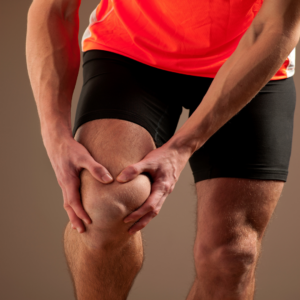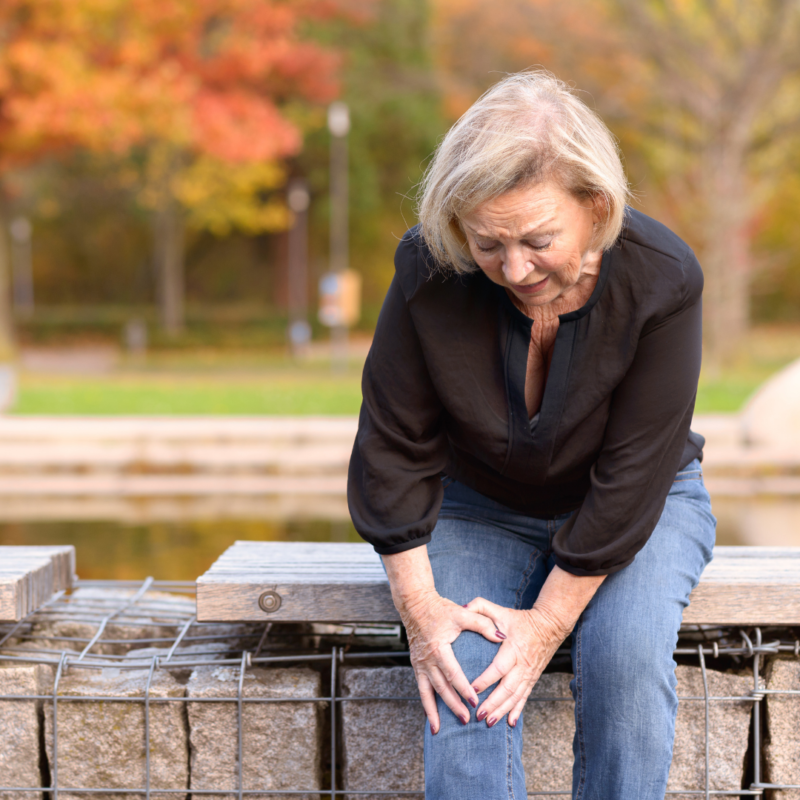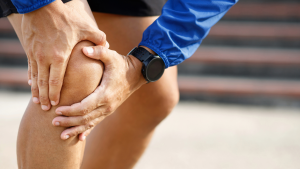
Orthopedic Doctor Upper Saddle River NJ
Knee Pain Due To Inactivity
Newton’s first law of physics states that an object in motion stays in motion. Why is that being brought up here? It’s because the same principle can be applied to the human body. Those who are continuously active and exercise have an easier time moving around than those who live sedentary lifestyles. If inactivity has led to you experiencing knee pain, our team at New York Sports Medicine Institute will be there to help. Dr. Neil Roth, our sports medicine expert, can properly diagnose the problem before crafting the treatment solution needed to get you back to being pain-free. Visit our Orthopedic doctor upper saddle river NJ today!
Causes Of Knee Pain
Sometimes, moving your knee around after a long period of inactivity can lead to your initial pain. In other circumstances, pain may lead to you being unable to move your knee, which only creates a cycle that exacerbates the problem. That is why diagnosing your knee pain is the first step in correcting the dilemma. Once this has been done, Dr. Roth can determine the best course of action moving forward. Any of the below can cause knee pain and be treated or managed by our team:

- Osteoarthritis.
- Tendinitis.
- Bursitis.
- Runner’s knee.
- Gout.
- Dislocations.
- Ligamentous issues.
Risk Factors For Knee Pain
When it comes to any injury or painful condition, it’s essential to discuss the risk factors that can lead to its development. By doing so, patients have a better chance of actively avoiding it from taking place. Our team wants to help keep you on your feet and moving around, which is why we’d like to call out some of the risk factors that can lead to knee pain. The following are but a few of them:
- Being overweight.
- Having a history of knee problems.
- Being at an older age.
- Experiencing trauma around the joint.
Why Knee Inactivity Makes The Problem Worse
Resting an injured area plays a crucial role in recovery. While many people realize this concept, they fail to understand that too much inactivity can cause more problems. This is especially true when it comes to the knee. Your knee joints bear most of your body weight and allow for movements such as walking and running. When you keep these areas inactive for too long, the tissues that makeup and surround this joint can become stiff and weak. Trying to move around after that can be a painful and challenging experience. That is why when you suspect a knee issue, you should seek a professional opinion from us here at New York Sports Medicine Institute to prevent it from getting any worse.
Symptoms To Watch For
Our team wants to make an essential distinction between when to and when not to see a doctor. If you experience slight knee pain that goes away after a few minutes, that does not mean a problem has occurred. We all feel pain from time to time. However, as previously stated, waiting too long to seek care can cause problems. That is why when the below symptoms begin to take place, it’s time to schedule an appointment with the NYSMI team:
- Constant aching in the joint.
- Sharp or shooting pain during movement.
- Experiencing a dull, burning discomfort.
How We Will Help
Once you’ve arrived for your first appointment, Dr. Roth or Dr. Delaney can properly diagnose what is causing your pain. What takes place for treatment will directly depend on the issue you’re facing. Examples of the treatment regimens that may be utilized include the following:
- Bracing or casting to immobilize the joint.
- Referring you to a top physical therapist.
- Surgery to repair the structural damage causing you pain.
Contact Our Orthopedic Doctor Upper Saddle River NJ
If you’ve found yourself dealing with knee pain due to inactivity, you are not alone. Many people face the same problem each year. To get back on your feet, consider working with us here at New York Sports Medicine Institute. Our team is well versed in treating issues found in the knee and will work diligently to get you back to full strength. To schedule your first appointment, please contact our team today.
Can You Walk With A Torn ACL?
The signs of a torn ACL are easily recognizable. A loud popping sensation or sound in the knee, rapid swelling, severe pain all point to an ACL injury. Unfortunately, this injury is all too common among athletes and is universally dreaded. If you’re dealing with an ACL injury, our team at New York Sports Medicine Institute is here to help. We provide quality orthopedic care to our patients to help them get back on the field and in top playing condition. Please continue reading to learn more about how we address ACL tears.
ACL Tears
The anterior cruciate ligament (ACL) is a fibrous, tough band of connective tissue found in the knee that provides support and stability in the joint. The ACL is one of the four most important ligaments found in the knee and helps facilitate movement. ACL tears most commonly occur during activities that involve abrupt stops or sudden changes in direction or jumping and landing. Athletes that play soccer, football, lacrosse, and basketball are more susceptible to this injury. One of the telltale signs of an ACL tear is an audible popping sensation or sound during the injury and swelling and instability in the knee. Some other signs of an ACL tear can include:
- Swelling.
- Severe pain.
- Limited range of motion.
- Inability to bear weight on the injured leg.
The ACL is the primary stabilizer in the knee, and a torn ACL can lead to feelings of instability when walking or changing directions. After your injury, you may be able to walk in a straight line, but changing directions can be a challenge. Even if you can still walk after an injury, this does not rule out an ACL tear. Walking with a torn ACL can exacerbate your injury and cause additional damage to the joint. Our dedicated staff will evaluate your situation and determine the best course of action to eliminate your pain and facilitate your recovery.

How To Treat ACL Tears
Seeking the help of our team at New York Sports Medicine Institute for your ACL tear can help ensure you make a speedy recovery. One of the first courses of treatment we may recommend after an injury is resting. Our team may also recommend that you use crutches or a knee brace to limit weight-bearing on the injured leg. Depending on the severity of the tear, more conservative treatments are recommended at first. If your ACL tear is more severe, you may require surgery to repair the tendon. Surgical repair of an ACL tear typically involves reconstruction of the ligament using a tendon graft. This reconstruction surgery can be performed arthroscopically. After surgery, physical therapy may be necessary to ensure an optimal recovery.
Preventing ACL Injuries
An ACL tear is a universally dreaded injury, but it can be prevented. Being aware of the certain risk factors and behaviors associated with ACL tears can help you stay vigilant and prevent ACL tears from sidelining you in the future. Here are some of the ways you can ensure a safe sports season and maintain a healthy ACL:
- Implement strength training.
- Warm up and stretch before activity.
- Focus on your balance.
- Strengthen the muscles of your feet, legs, and ankles.
- Wear proper footwear.
- Practice proper athletic technique.
Contact Us – Orthopedic Doctor Upper Saddle River NJ
Despite our best efforts, ACL tears happen, which is why our team at New York Sports Medicine Institute is here to help! We offer some of the most effective treatment options for ACL injuries. From orthopedic surgery to physical therapy, our experienced staff is well-versed in helping athletes return to play after an ACL injury. To learn more about how we manage ACL tears or to schedule an appointment, be sure to contact our team today!
Avoiding Wear and Tear On The Knee
In need of an Orthopedic doctor upper saddle river NJ for your pain and discomfort? Dr. Neil Roth and the team at NYSMI can assist you. Contact one of our three offices today to learn more.
What Is The Knee Joint?
As the largest joint in the body, the knee is the most commonly injured joint, especially among athletes and active individuals. In addition to being the largest joint of the body, it is also the most complex, made up of a series of bones, ligaments, cartilage, and more, which allow the joint to serve many purposes and sustain heavy activity.
However, despite this, the knee is extremely susceptible to wear and tear. If you are an athlete, gym frequenter, or are just experiencing knee pain from daily life, our Orthopedic doctor upper saddle river NJ at NYSMI is here to give you advice on avoiding wear and tear on the knee, and to tell you about some of the knee pain treatment options available to you.

What Causes Knee Injuries and “Wear and Tear” on the Knee Joint?
Usually, the cause of knee pain and injuries is dependent on the type of physical activity and the lifestyle of the individual. For non-athletes, the following can cause knee pain and wear and tear on the joint:
- Frequent stair climbing
- Frequent jumping
- Arthritis
- Repetitive motions
- Awkward planting of the foot when walking/running/climbing
- Lack of muscle flexibility or strength
- Excessive weight and pressure on the knee, from being overweight or obese
However, for athletes and those with highly active lifestyles, wear and tear on the knee can lead to knee injuries. It is important to know what type of knee injury you might have to better prevent wear and tear in the future. Our Orthopedic doctor upper saddle river NJ at NYSMI found that the most common of these are:
- ACL Injury: usually caused by a change in speed or awkward landing or pivot
- MCL Injury: usually caused by collision on the side of the knee
- PCL Injury: usually caused by collision to a bent knee or twisting of the joint
- Meniscus Tear: usually caused by pivoting, twisting, being tackled, abrupt speed change
- OCD of the Knee: a condition that develops in athletes after another knee injury
- Articular Cartilage Injury: damaged cartilage in the knee, or “wear and tear,” requires treatment and prevention methods against further injury
How Can I Avoid and Prevent “Wear and Tear” and Other Knee Injuries?
For athletes, active individuals, and all others, our Orthopedic doctor upper saddle river NJ at NYSMI recommends a variety of measures to prevent knee wear and tear over time. These include:
- Don’t decrease your exercise: Even if you’re experiencing knee pain, it is important to continue exercising regularly. This is so that the muscles of the knee do not weaken or deteriorate. One of the most important aspects of maintaining knee health is to strengthen and increase flexibility in the muscles of the knee. In addition, maintaining a good exercise routine will help keep your weight at a normal level for your height, age, and gender, which reduces stress on the knee and increases mobility.
- Ensure that your footwear is high quality and fits well: Wearing proper footwear, in physical activity and everyday life, is essential in preventing knee injuries and long term wear and tear. Proper footwear allows for ideal hip-leg-knee-ankle alignment, and increases your balance. While improper footwear may not feel as if it increases knee pain at the time, its effects can be long term and highly damaging.
- Warm up before exercise: Flexibility is a key factor in preventing knee pain and injuries. Thigh stretches are especially important in decreasing pressure and tension on the knees. This can also help prevent long term wear and tear as the knee increases in flexibility and range of motion.
- Engage in low-impact exercise: For athletes and those with active lifestyles, opting for low impact exercise is important in maintaining knee strength. Activities that include jumping, collisions, and quick changes in speed can wear and tear at the knee joint over time. While it is important to maintain an exercise program, consider changing your routine to low impact activities, such as walking, swimming, using an elliptical instead of a treadmill, and other practices that reduce impact on the knees.
Orthopedic Doctor Upper Saddle River NJ
If you are already experiencing knee pain from wear and tear or a related injury, our team at NYSMI is here to help. Our treatment options for knee pain vary based on each individual case, but mainly include:
- Physical Therapy (for most types of chronic knee pain or wear and tear)
- Minimally Invasive Arthroscopic ACL and PCL Reconstruction Surgery
- Partial Knee Replacement (usually for ACL and PCL injuries, as well as osteoarthritis)
- Full Knee Replacement (usually for osteoarthritis)
Contact us today to schedule an appointment, and find out more about how to treat current knee pain, and prevent future wear and tear. Our Orthopedic doctor upper saddle river NJ at NYSMI is always ready and able to help!
How Do You Tell If Your Knee Is Sprained Or Torn?

Knee injuries are prevalent in that they can happen to anyone at any given moment in time. Many people seem to come across the most common one regarding whether their Knee is a sprain or tear. No matter which injury you have, they can be very painful, which may even limit your ability to walk or even perform daily activities. New York Sports Medicine Institute Orthopedic doctor upper saddle river NJ can help you overcome your injuries. If you’re dealing with any Knee problems, schedule an appointment today to see how we can help!
Knee Sprain
If you’re dealing with a Knee Sprain, then one of the four major ligaments located in your Knee has either been stretched too far based on a type of movement you have performed. Unfortunately, this can happen to anyone, so there is no way to prevent it from occurring. One thing you can do is to be cautious about the type of movements you’re doing. Many times knee sprains occur during activities such as sports or when a sudden movement occurs. But no matter how bad your injury is, an Orthopedic doctor upper saddle river NJ can help identify this type of injury.
Different Types of Knee Sprains
- Grade 1- The ligament in your Knee is either slightly stretched or mildly hurt. You can still put weight on your Knee, but activities will be limited to how much pain you’re in.
- Grade 2- This is when the ligament is stretched out to the point where a potential tear in the Knee can occur. You will not be able to put any weight on your Knee often based on how much damage has already happened.
- Grade 3- At this point, the ligament is in a complete tear and split into two pieces. The Knee joint is very unstable, and you will not be able to put any weight on it, and it can be excruciating to move at all.
Symptoms of A Knee Sprain
New York Sports Medicine Institute Orthopedic doctor upper saddle river NJ can help with any of these symptoms:
- Swelling
- Bruising
- Pain around the knee area
- There was a popping noise when the actual injury occurred.
- Your range of motion is minimal.
- Stiffness from the amount of pain
Torn Knee
As you can tell, your Knee takes on a lot of pressure based on how much we rely on this joint the most in our body. There’s a lot of wear and tear on the Knee that takes place. This happens over time due to the number of activities that we perform. However, at first, when this type of injury would occur, there will be little to no pain at all. Afterward, when you begin to get settled, a lot of inflammation would happen, and contact Orthopedic doctor upper saddle river NJ.
Treatment for Torn Knee
- Rest- Limit any activities that you may be involved in.
- Ice- Place ice on your Knee to help reduce some of the pain and swelling that may be occurring. Apply fifteen minutes on and off.
- Compression- Apply a compression bandage over your Knee to help maintain its position and with the swelling that will be involved.
- Elevate your Knee with a pillow so that it can reduce swelling.
- Take over-the-counter medicine if needed.
- Apply stretching exercises when needed.
How Do I Prevent This From Occurring?
- Warm-up before activities
- Allow your body to rest between workout days
- Stretch after a workout when your muscles are warm
- Wear proper footwear with enough support in them
Contact For An Orthopedic Doctor Upper Saddle River NJ!
Knee injuries are prevalent in that they can happen to anyone at any given moment in time. No matter which damage you have, they can be very painful, which may even limit your ability to walk or even perform daily activities. New York Sports Medicine Institute Orthopedic doctor upper saddle river NJ can help you overcome your injuries. If you’re dealing with any Knee problems, schedule an appointment today to see how we can help!
